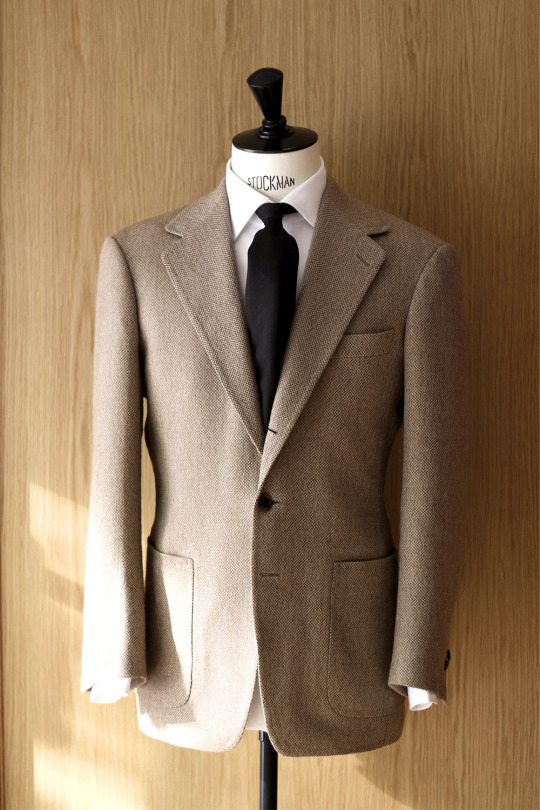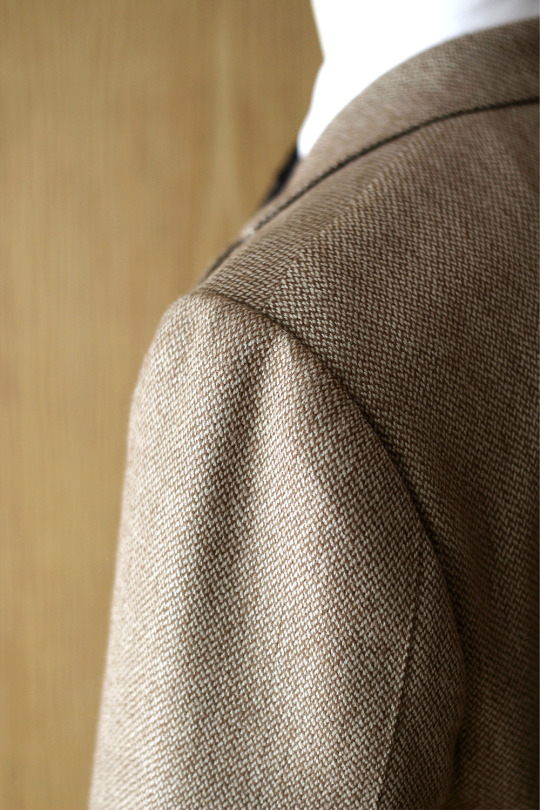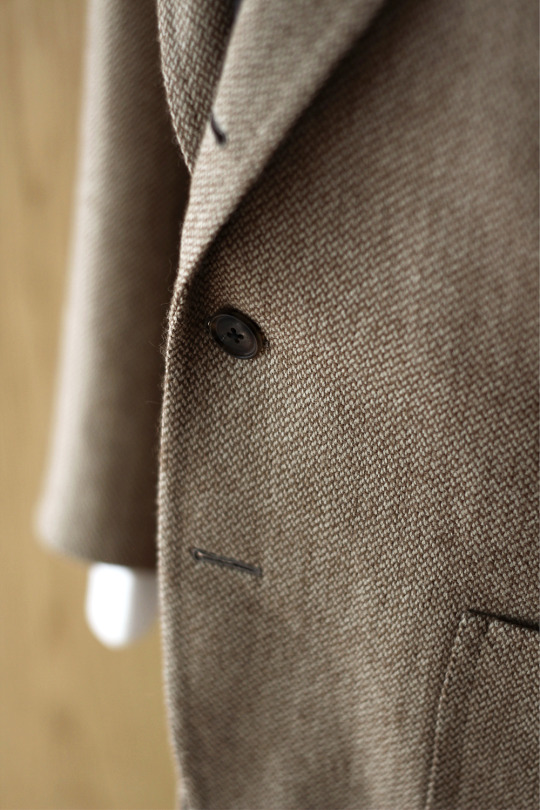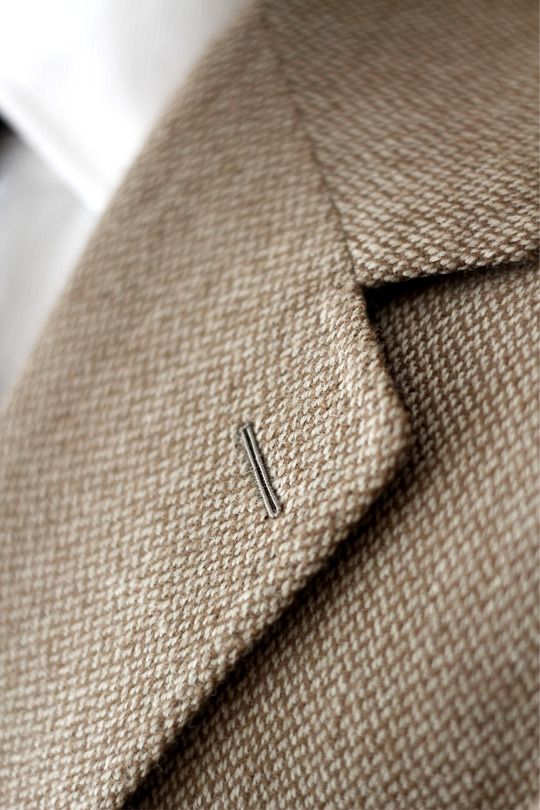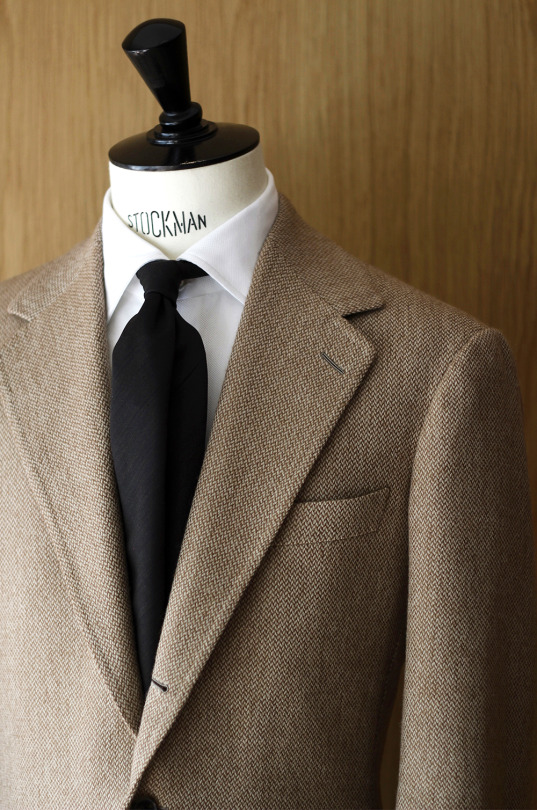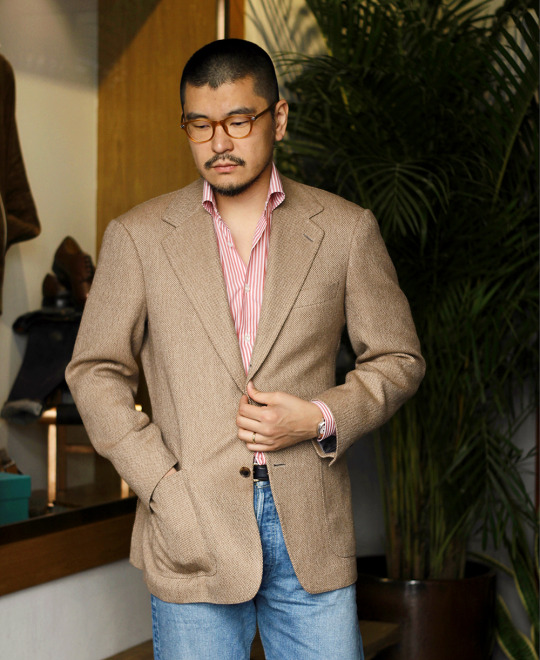
There’s an old adage often passed around by men who use bespoke tailors: don’t stray far from the house style. And for good reason. The best tailors specialize in certain looks, which they’ve carefully perfected over the years. Just as you wouldn’t order French food at Nobu, you shouldn’t ask for an Italian jacket from an English tailor. Even if he or she is willing to make it for you, it probably won’t look very good.
Sometimes, however, under the right hands, straying works. Last year, George Wang at BRIO told me about a new project he’s been working on with Hong Kong tailoring house W.W. Chan. They specialize in clean, classic, British-influenced cuts, but are also a bit more flexible than other tailors in terms of what they’re willing to make.
For the last couple of years, George has been working with W.W. Chan to create a distinctive house style for his store. When I met up with him last January, he brought a sample jacket, which was maybe it in its third or fourth iteration. “You can’t just give a tailor a big list of changes,” said George. “You have to see how small changes affect the look here and there through each commission. Plus, tailors can be set in their ways, so it’s easier to make these changes in piecemeal steps.”
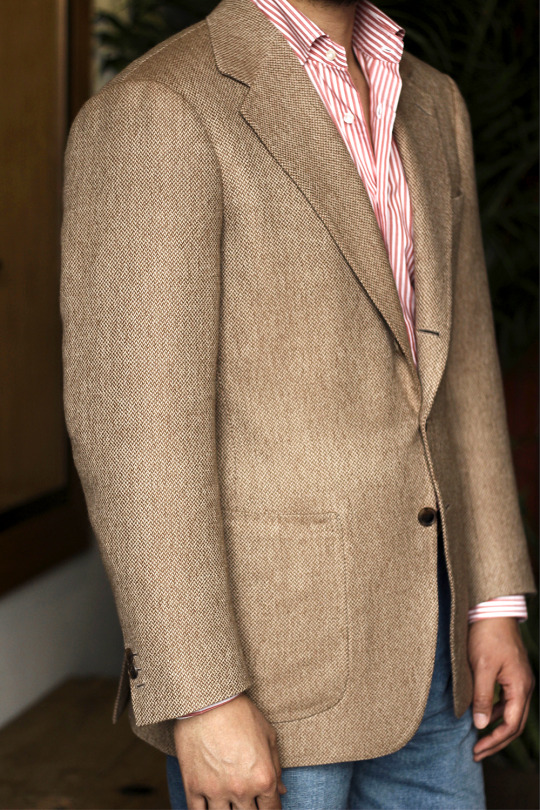
You can see an example of the new cut here. (Incidentally, a good pair of jeans, some suede loafers, and a pattered shirt can be a great way to dress down a textured sport coat, as George shows in the photo below).
One of the biggest changes is internal. George softened up Chan’s construction by having them take out some of the structure they use in the lower half of their jackets. In most bespoke jackets today, you’ll find two major layers: a soft linen canvas that’s used to give the garment body, then a horsehair canvas to give it shape. In a typical Chan jacket, that stiffer horsehair goes all the way to the hem, which shapes not only the chest, but also the overall silhouette (my Steed jackets, incidentally, are built the same way). George wanted his BRIO house style to be lighter and more expressive, so he had Chan reduce the horsehair canvas to just the chest area.
The rest is about how the chest and shoulders are cut. The chest here is full, but clean and with no drape. The lowered, slightly more angled gorge and extended collar form an equilateral triangle that points toward the wearer’s face. The lapels are slightly wide and have just the subtlest of bellies. And the shoulders – which are soft and sloping – are made with internal, pressed open seams, which give them a rounded, natural look (note how the shoulder line is almost flush with the sleevehead).

For me, the most appealing part is the slouchiness. The front of the jacket (what tailors call the front balance) has been lowered; the buttoning point is set just below the waist; and the chest is full and curved. Along with the softer construction, the jacket has an expressive, relaxed, and almost Italian sensibility. At times, the jacket almost looks like it’s falling away from the chest, which gives the silhouette a bit of youthful personality. On the other hand, the relatively closed quarters and smooth sleeveheads lend a sense of modesty – something conservative enough for pinstripe suitings.
There are some other interesting details here. Since the buttoning point has been lowered, the front buttons are necessarily set a little closer to each other. Additionally, the seams are all lapped, which gives a sportier look (George calls this the “exoskeleton of a jacket”). And, interestingly, the front darts, which would normally be under the ribcage, have been eliminated. Instead, all the shape is taken from a hidden underarm dart, much like you’d find in Florentine tailoring. George says he didn’t do that to imitate a regional style, however. “I believe in a kind of minimalism when it comes to contemporary tailoring, and hiding darts is part of that pursuit.”
I think three things made the project successful. First is working with a tailoring house that’s open minded and flexible enough to deviate from what they’re used to. Second is being able to commission four or five jackets to get what you need. (George says this is still a work in progress and he’s looking to slim the sleeves on the next order).
The most important, however, is understanding that a jacket isn’t just a sum of its parts. George has a uniquely sharp eye and sense of style. Combined with his extensive experience in working with bespoke tailors around the world, he’s been able to create something with feeling – an elusive concept, to be sure, but tremendously important to how a jacket looks and hangs. Men who think of tailoring as just being technically “right” or “wrong” often miss this. A good jacket should fit correctly, but it takes a bit of playing around to find a stylish silhouette. There’s a sense of movement and flow in this jacket that wouldn’t be possible if everything was cut according to “rules.”
George will be offering this BRIO house style at his W.W. Chan trunk shows. He’ll also be present at fittings, which I think helps with getting the look right. Readers in Beijing can get more info by contacting BRIO through their website and Instagram.
